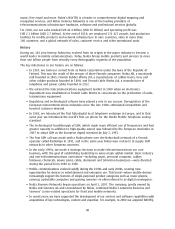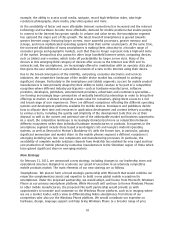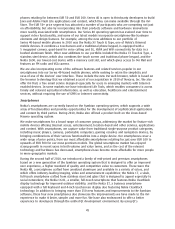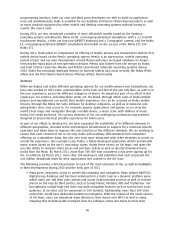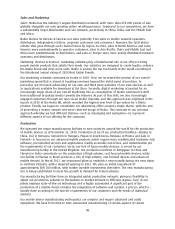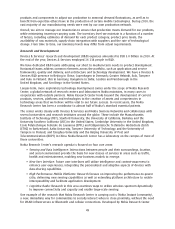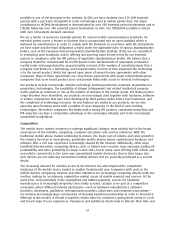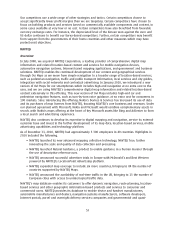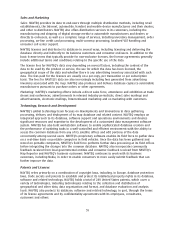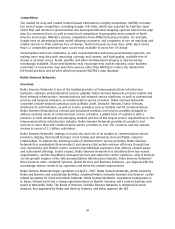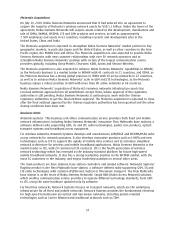Nokia 2010 Annual Report Download - page 51
Download and view the complete annual report
Please find page 51 of the 2010 Nokia annual report below. You can navigate through the pages in the report by either clicking on the pages listed below, or by using the keyword search tool below to find specific information within the annual report.and the Tampere University of Technology, Nokia Instant Community is a disruptive technology which
enables devices to connect to each other directly and continuously without the need for a server or
specific infrastructure. It uses a device’s WLAN chip in a powerefficient way to connect and create an
independent network. This project is part of Nokia Research Center’s ongoing research into cognitive
radio and is built on more than two decades of academic research into radio technologies.
Another example of Nokia Research Center’s research is High Accuracy Indoor Positioning (HAIP),
which provides precise indoor location information on a handset without needing GPS, and could
enable new services, such as precise routing and navigation inside a building, as well as highly
accurate location based advertising. HAIP uses low power wireless signals sent from a tag or mobile
device to calculate the position of the subject to within one meter. The signals are received by
beacons fixed to the ceiling inside a building. These beacons can also be used to send precise indoor
location information directly to a device creating accurate indoor positioning.
Strategic Sourcing and Partnering
In line with industry practice, Devices & Services sources components for our mobile devices from a
global network of suppliers. Those components include electronic components, such as chipsets,
integrated circuits, microprocessors, standard components, printed wiring boards, sensors, memory
devices, cameras, audio components, displays, batteries and chargers, and mechanical components,
such as covers, connectors, key mats, antennas and mechanisms. Such hardware components account
for the majority of our overall spending on sourcing.
We also source software, applications and content from a global network of thirdparty companies,
application developers, content providers and industryleading technology providers. For instance, we
obtain content from commercial partners in the music industry to offer an extensive catalog of digital
music through Ovi Music, our digital music store, and content from travel guide publishers to expand
and enhance Ovi Maps.
Patents and Licenses
A high level of investment by Devices & Services in research and development and rapid technological
development has meant that the role of intellectual property rights, or IPR, in our industry has always
been important. Digital convergence, multiradio solutions, alternative radio technologies, and
differing business models combined with large volumes are further increasing the complexity and
importance of IPR.
The convergence has for a long time meant that complete products integrate a number of
technologies, and that multiple parties contribute to the development of new technologies. The
detailed designs of our products are based primarily on our own research and development work and
design efforts, and generally comply with all relevant and applicable public standards. We seek to
safeguard our investments in technology through adequate intellectual property protection, including
patents, design registrations, trade secrets, trademark registrations and copyrights. In addition to
safeguarding our technology advantage, they protect the unique Nokia features, look and feel, and
brand.
We have built our IPR portfolio since the early 1990s, investing approximately EUR 43 billion
cumulatively in research and development, and we now own over 10 000 patent families. As a
leading innovator in the wireless space, we have built what we believe to be one of the strongest
and broadest patent portfolios in the industry, extending across all major cellular and mobile
communications standards, software and services as well as hardware and user interface features and
functionalities. We receive royalties from certain handset and other vendors under our standard
essential patent portfolio.
We are a world leader in the development of the wireless technologies of GSM/EDGE, 3G/WCDMA,
HSPA, LTE, OFDM, WiMAX and TDSCDMA, and we have a robust patent portfolio in all of those
technology areas, as well as for CDMA2000. We believe our standardsrelated essential patent
50


